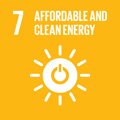- Docente: Michele Mattetti
- Credits: 6
- SSD: AGR/09
- Language: Italian
- Teaching Mode: In-person learning (entirely or partially)
- Campus: Bologna
- Corso: Second cycle degree programme (LM) in Planning and management of agro-territorial, forest and landscape (cod. 8532)
Learning outcomes
At the end of the course the student will acquire a knowledge on power-plants related to renewable sources. Particularly the student will be able to apply the knowledge in the agro-forestry environment to solve the energy requirement problems.
Course contents
INTRODUCTION TO THE MAIN ENERGY SOURCES (6 h). Primary and secondary energy, renewable and not renewable sources. Main units of measure. Energy needs and energetic dependence. Reserves of the different sources of energy. Productivity and energy consumption of the different renewable sources.
BIOENERGY AND RENEWABLE ENERGY (6 h). Production of energy from biomass: characteristics, sources and types; the heating value, volatil matter content and ash content. The conversion process: thermo-chemical and bio-chemical processes.
COMBUSTION AND GASIFICATION (12 h). Combustion: principles, fixed-bed and fluidised-bed furnaces. The stream cycle to produce electrical energy. Gasification: fixed-bed and fluidised-bed gasifiers. Pyrolysis: methods and main products.
ANAEROBIC DIGESTION (8 h). Biodegradation and characteristics of the main materials. Plants for the biogas production: feeding systems, mixing systems, digesters, biogas storage, production of electrical and thermal energy. Biomethane.
OTHER ENERGY SOURCES (10 h). Aerobic digestion and alcoholic fermentation, biodiesel. Solar energy: solar thermal, solar thermodynamics, solar photovoltaic. Wind energy: principles and main fun types. Hydraulic energy: hydroelectric plants and their operation.
Social acceptability of the plants. Subsidy and authorisation procedures. (6 h)
FIELD VISITS (12 h)
Readings/Bibliography
Energy from biomass. A review of combustion and gasification technologies. WTP422.
Biomass and alternate fuel systems. An engineering and economic guide. Ed by T.F. McGowan. Wiley
CIGR Handbook of Agricultural Engineering. Vol. 5: Energy & Biomass Engineering. Published by ASAE – USA
Teaching methods
Teaching is articulated in frontal lectures and lab experiments.
Assessment methods
The knowledge verification will be performed only through the final examination, which verifies the acquisition of knowledge and skills expected by an oral examination of about 1 hour without the aid of notes or books.
The oral examination consists of 3 questions, one concerning the direct combustion of biomass in boilers to produce heat or electricity, one concerning the bio-chemical transformation of biomass to produce biogas with particular reference to the plants and their operations, and one on the remaining renewable sources for energy production, solar, wind and hydropower.
The final grade is calculated as an arithmetic average of the grades obtained in all three questions.
Teaching tools
Instruments and lab material.
Office hours
See the website of Michele Mattetti
SDGs

This teaching activity contributes to the achievement of the Sustainable Development Goals of the UN 2030 Agenda.
